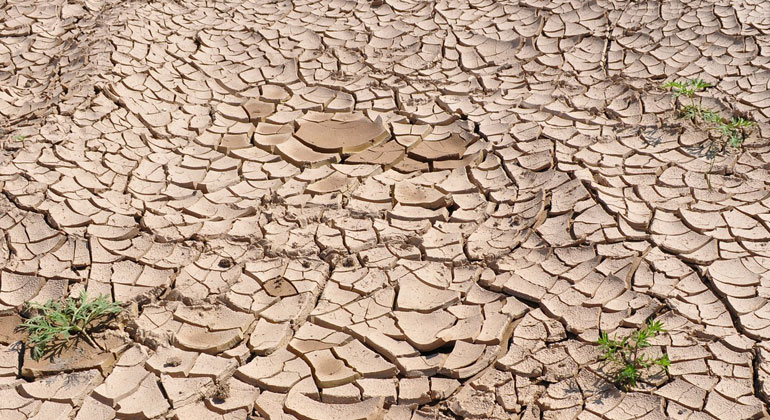Updated Global Water Risk Atlas Reveals Top Water-Stressed Countries and States
WRI’s Aqueduct Water Risk Atlas helps companies, businesses, investors, and governments to identify and evaluate water risks around the world.
The world has seen a string of water crises in recent years, as what’s now known as “Day Zero” – the day when the taps run dry – has threatened major cities from Cape Town to São Paolo to Chennai. These cities are just a few examples of how water stress can impact people, livelihoods and businesses around the globe.
WRI’s updated Aqueduct Water Risk Atlas finds that 17 countries, which are home to a quarter of the world’s population, face “extremely high” water stress. The tool ranks water stress, drought risk, and riverine flood risk across 189 countries and their sub-national regions, like states and provinces. Aqueduct uses a robust, peer reviewed methodology and the best-available information to create customizable global maps. Aqueduct’s updated hydrological model shows a more accurate, granular picture of water risk than ever before. The platform was used by more than 50,000 people in 2018. The same year, more than 300 companies used the tool to disclose water risks to CDP .
In the 17 countries facing extremely high water stress, agriculture, industry, and municipalities are drinking up 80 percent of available surface and groundwater in an average year. When demand rivals supply, even small dry shocks – which are set to increase due to climate change – can produce dire consequences.
“Water stress is the biggest crisis no one is talking about. Its consequences are in plain sight in the form of food insecurity, conflict and migration, and financial instability.” said Dr. Andrew Steer, President and CEO of the World Resources Institute. “The newly updated Aqueduct tools allow users to better see and understand water risks and make smart decisions to manage them. A new generation of solutions is emerging, but nowhere near fast enough. Failure to act will be massively expensive in human lives and livelihoods.”
Aqueduct sheds light on hot spots for water risk around the world. For example, in the Middle East and North Africa (MENA) region, home to 12 of the 17 countries facing “extremely high” stress, experts have pinpointed water scarcity as a force that can exacerbate conflict and migration. India, ranked #13 on Aqueduct’s list of “extremely highly” water stressed countries, has more than three times the population of the other 16 countries in this category combined. Northern India faces severe groundwater depletion, visualized on Aqueduct’s maps and included in calculations of water stress for the first time.
“The recent water crisis in Chennai gained global attention, but various areas in India are experiencing chronic water stress as well,” said Shashi Shekhar, former Secretary of India’s Ministry of Water Resources, and Senior Fellow, WRI India. “India can manage its water risk with the help of reliable and robust data pertaining to rainfall, surface, and groundwater to develop strategies that strengthen resilience. Aqueduct can help identify and prioritize water risks in India and around the world.”
Many companies use Aqueduct to plot priority locations, like facilities, suppliers, new markets, or proposed power plants, and evaluate their exposure to water risk.
“Procter & Gamble is committed to protecting water for people and nature in priority basins as we continue to reduce water use at facilities, employ circular sources at our sites, and inspire products that help people consume responsibly,” said Shannon Quinn, Global Water Stewardship Leader, Procter & Gamble. “Data from the Aqueduct Water Risk Atlas enables our company to evaluate water risks across our value chain to effectively identify priority areas for collaborative action. We look forward to using the next generation of the tool.”
Aqueduct’s tools map water risks such as floods, droughts and stress, using open-source, peer reviewed data. Aqueduct now includes 13 indicators of water risk, including new additions such as groundwater availability and water depletion, and monthly snapshots of water stress and variability.
“Aqueduct serves as the starting point for businesses and organizations that take water risks seriously” said Paul Reig, who leads Aqueduct and WRI’s corporate engagement on water. “More companies that ever before are using Aqueduct to prioritize investments in solutions in watersheds that matter the most.”
Aqueduct is supported by the Aqueduct Alliance, a coalition of leading companies, governments and foundations working with WRI to improve sustainable water management. Its data were developed in collaboration with our research partners at Delft University of Technology, Deltares, Utrecht University, Institute for Environmental Studies (IVM), PBL Netherlands Environmental Agency, and RepRisk.
- “17 Countries, Home to One-Quarter of the World’s Population, Face Extremely High Water Stress”
- For more information visit: aqueduct.wri.org








